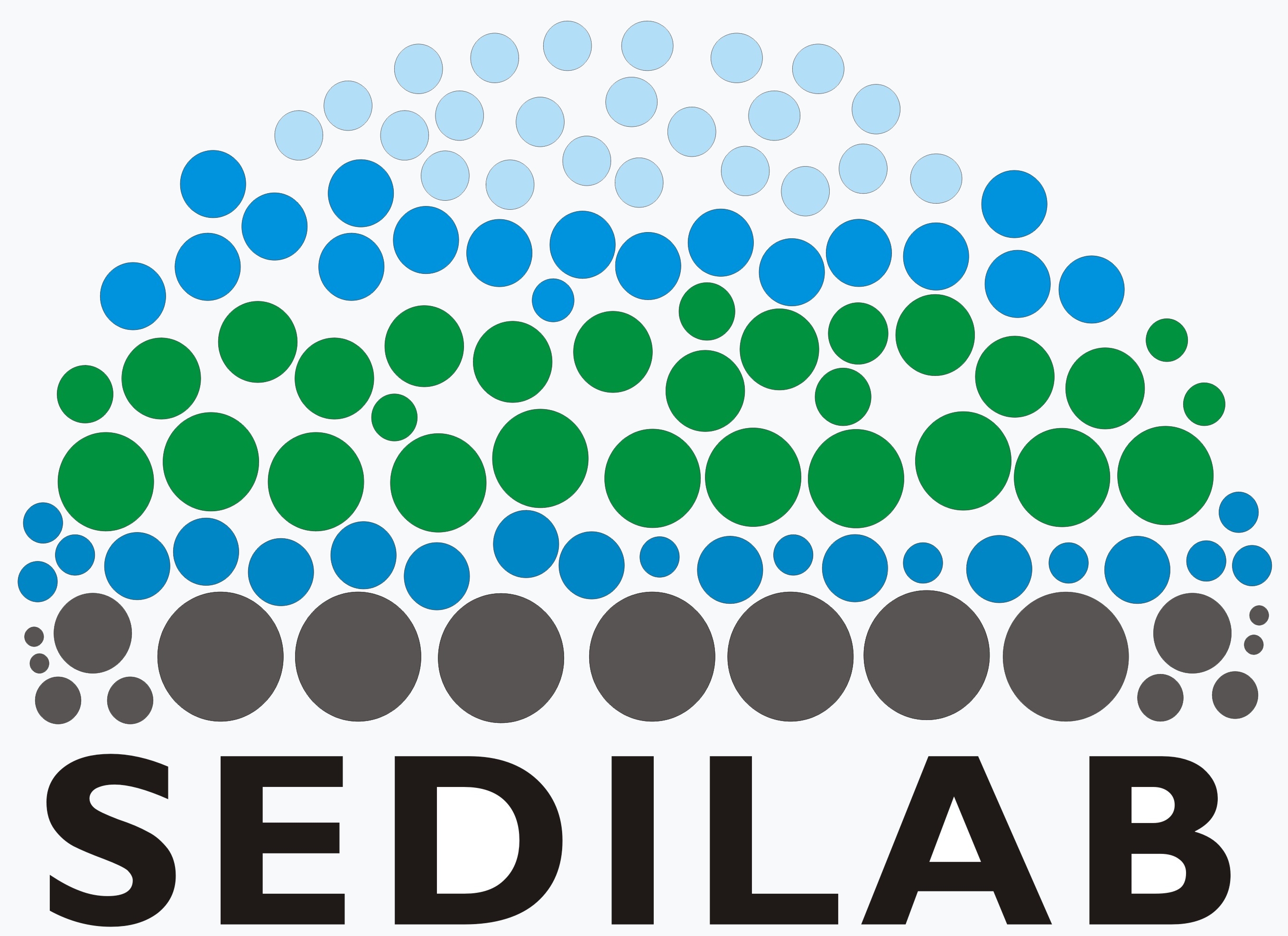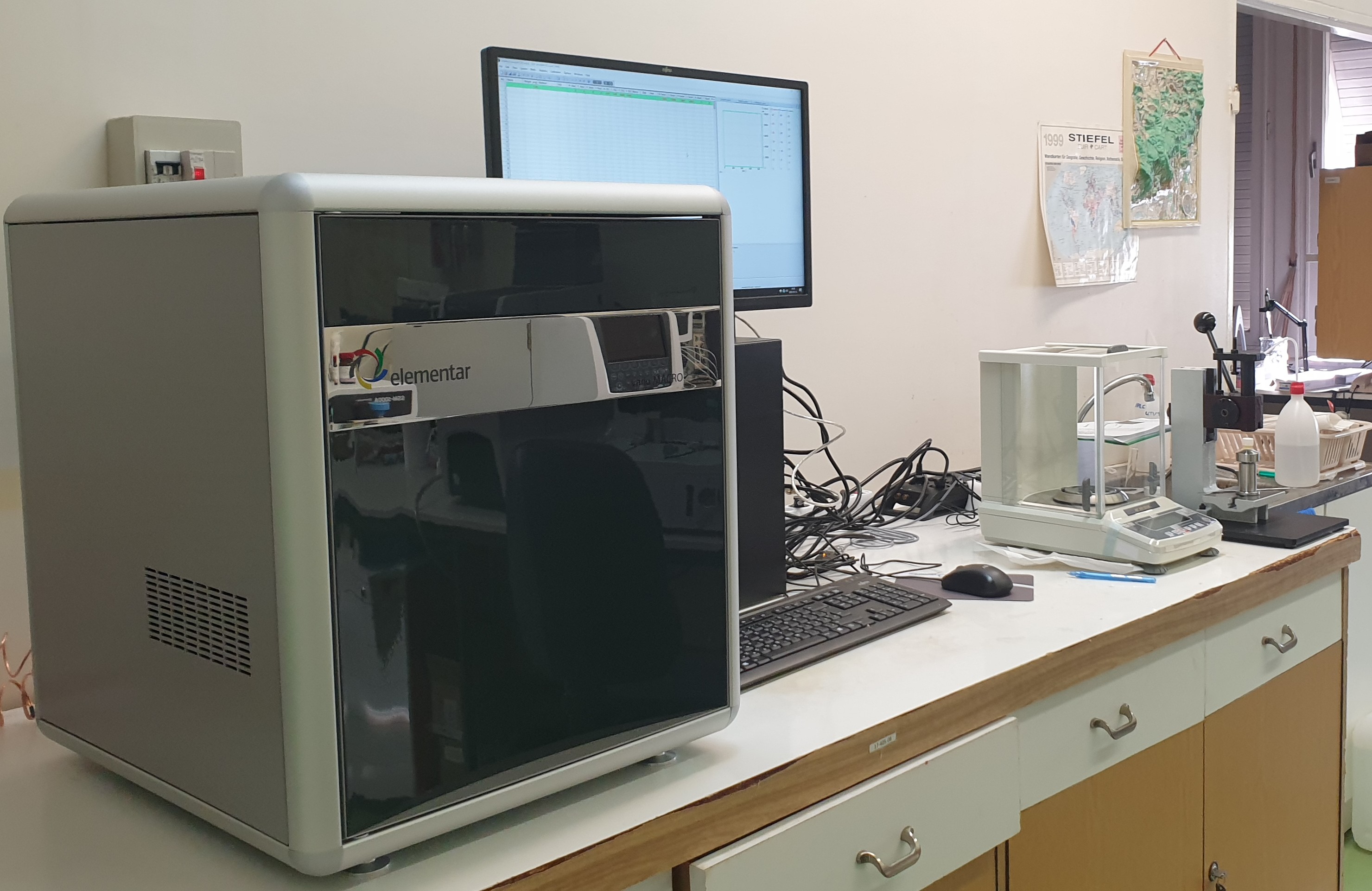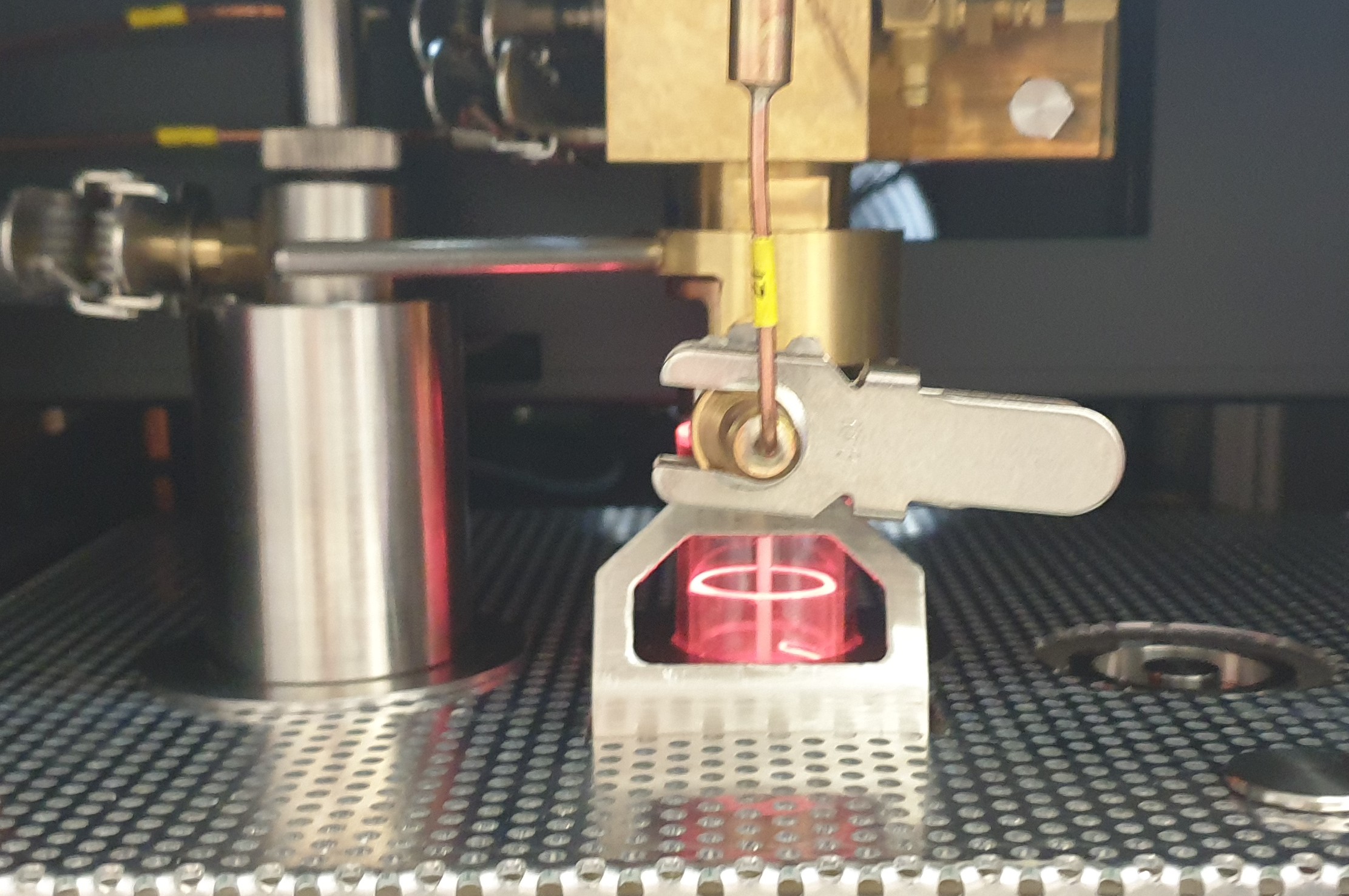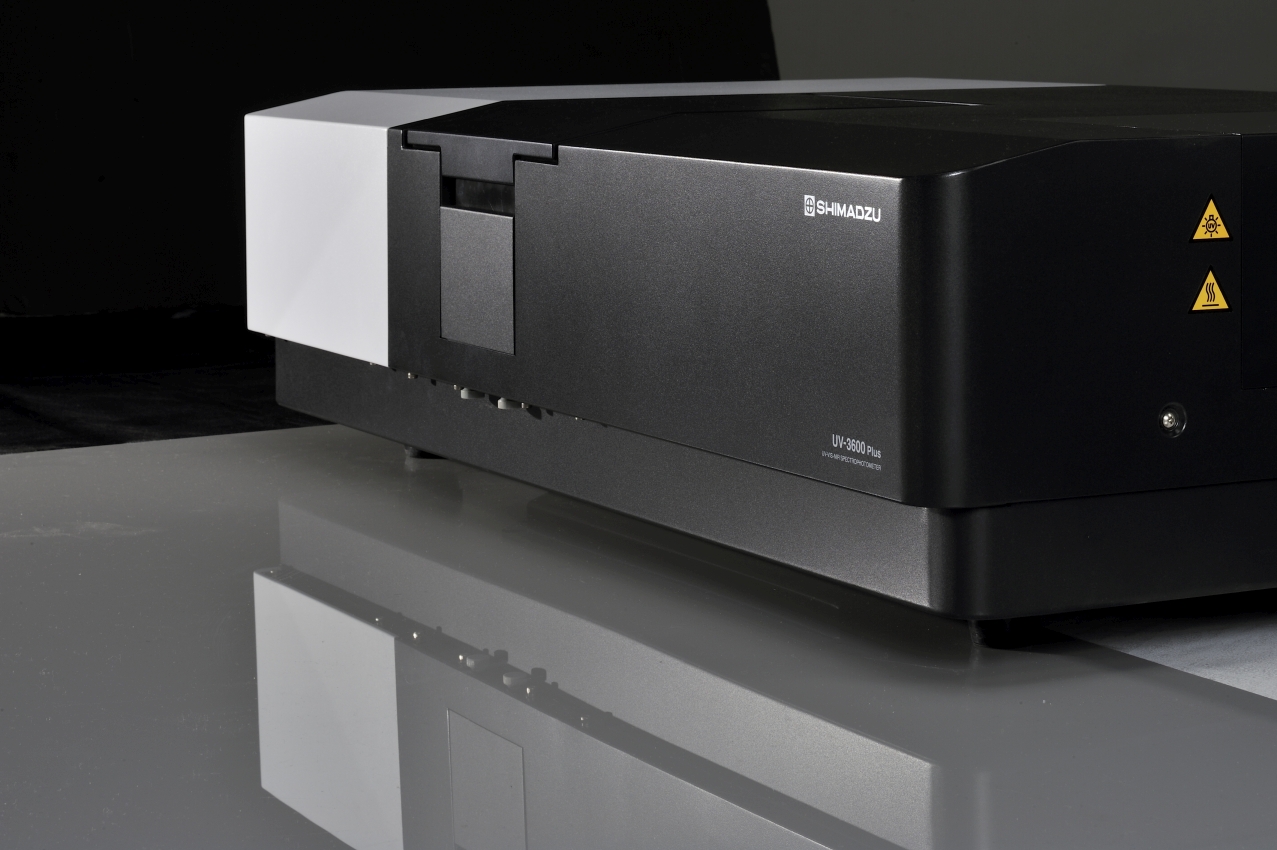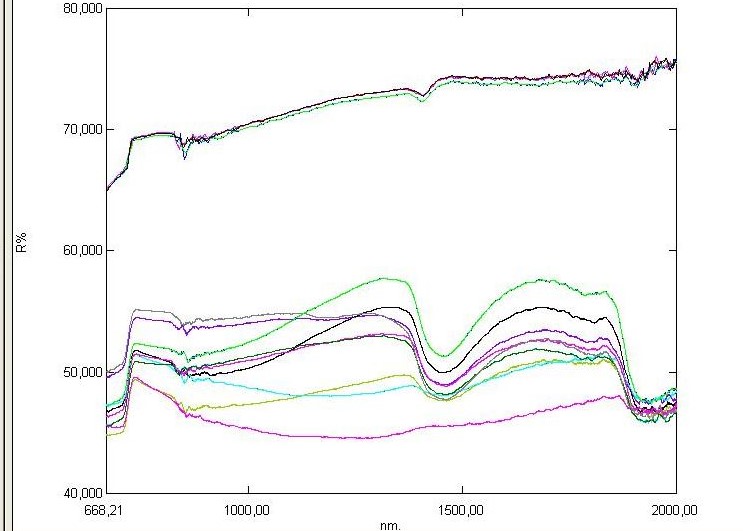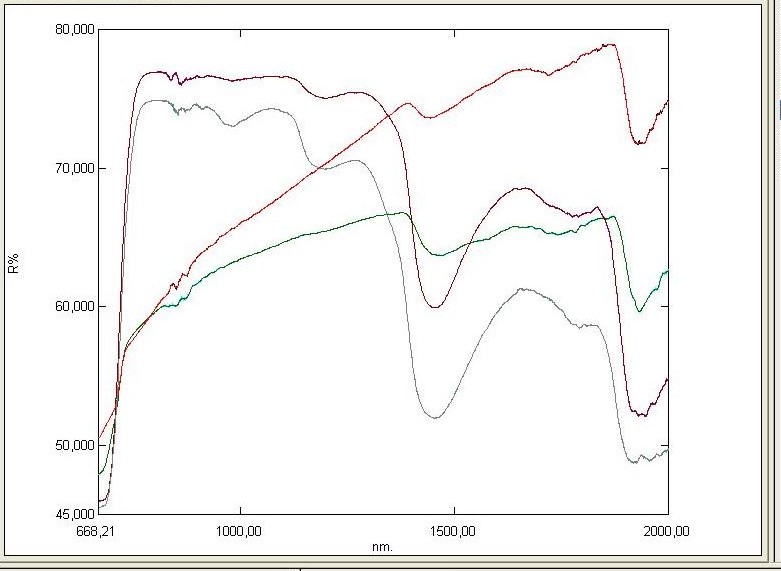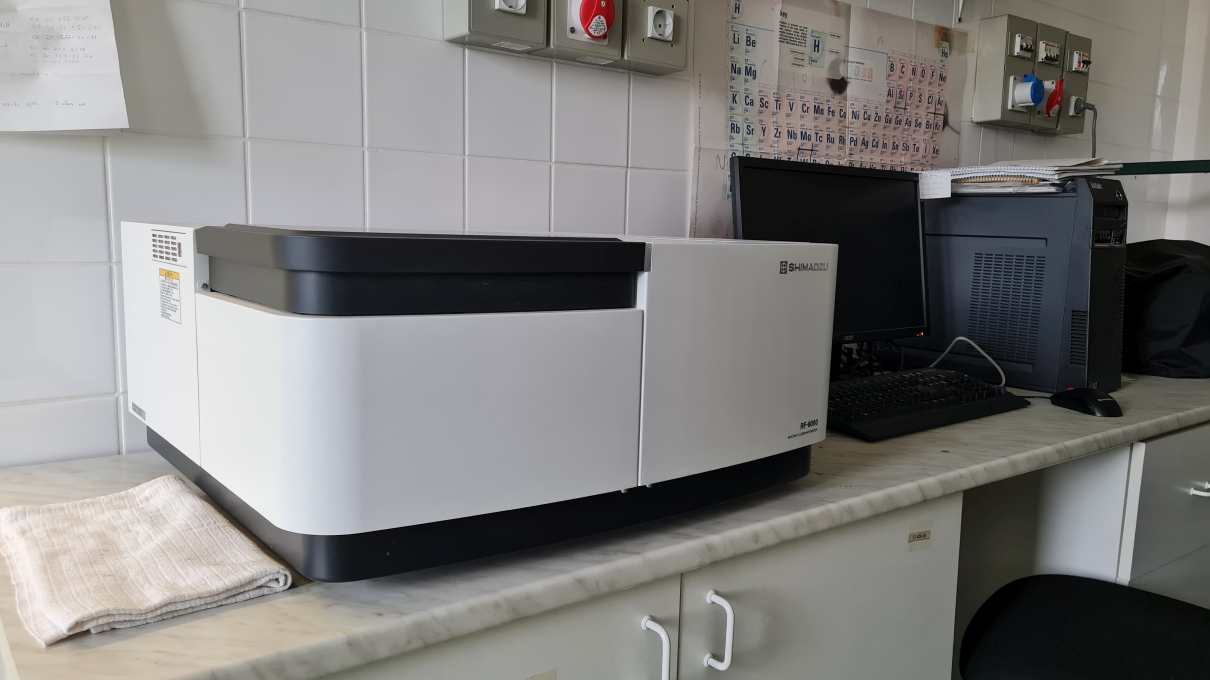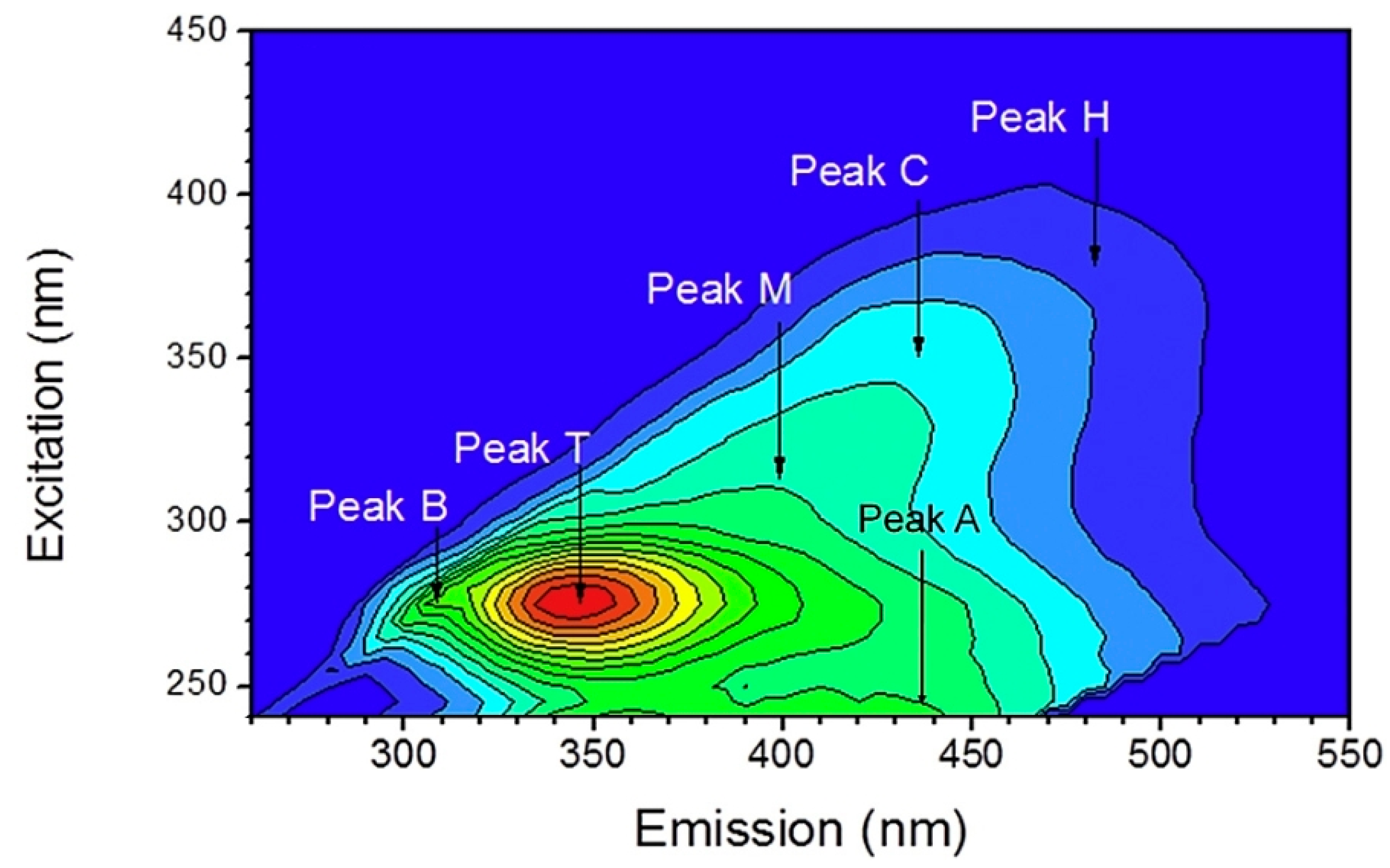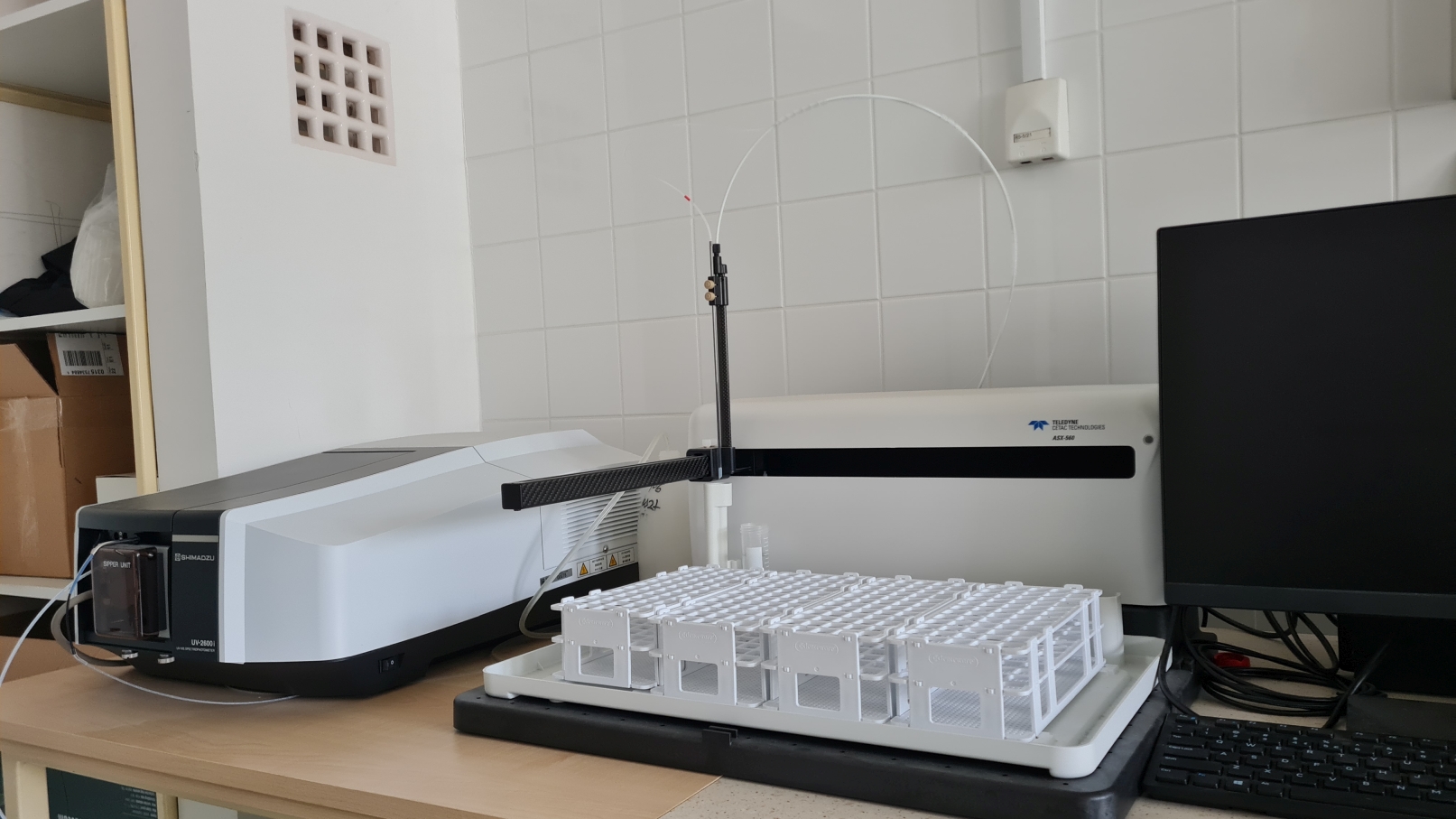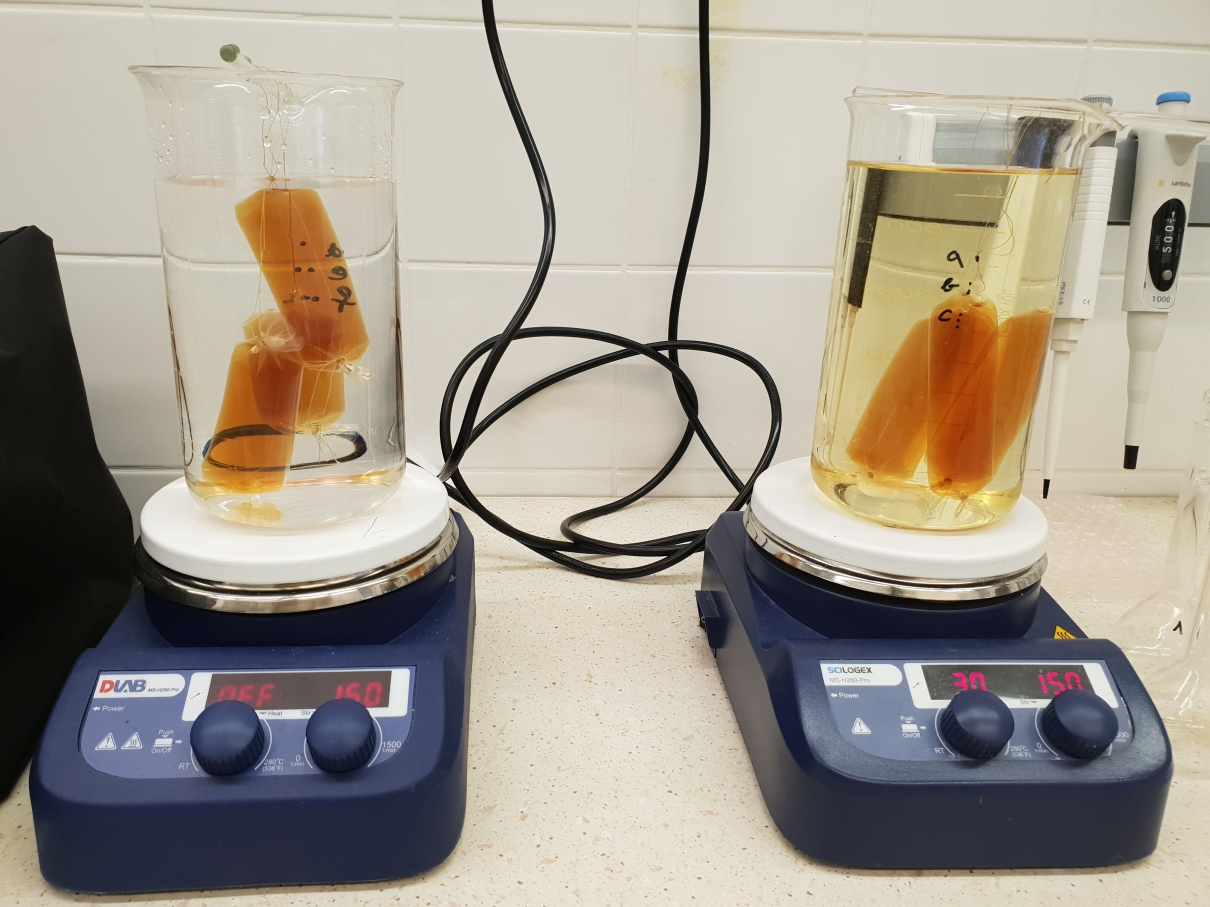
Laboratory for Sediment and Soil Analysis (SEDILAB) HUN-REN Research Centre for Astronomy and Earth Sciences, Geographical Institute
LABORATORY FOR SPECTROPHOTOMETRY AND SOIL ORGANIC MATTER CHARACTERIZATION
This laboratory unit primarily provides instrumental analysis of liquid and solid phase soil organic matter but also performs spectroscopic analysis of other liquid, soil and plant samples, as well as solid phase geological and planetary meteorite samples.
Key measurement areas
- Determination of CHNS content of soil and plant samples (solid phase samples)
- Determination of soil IC content from solid phase material
- TC, IC, TOC and TN determination from liquids
- Determination of diffuse reflectance spectra of materials in the UV-NIR range
- Determination of UV-ViS, UV-NIR spectra of liquid samples
- Determination of fluorescence EEM spectra of liquids
Determination of C H N S content of organic matter
The C, H, N, and S content of solid phase materials is determined using an elemental analyser using the Dumas principle and TCD detector. Determination of the amount of organic carbon (TOC or SOC) is performed in two ways: 1./ determination of the C content after removal of carbonates, or 2./ calculated from the difference between total carbon (TC) and inorganic carbon (IC) (TOC = TC - IC).
Available devices
Elementar varioMacro Cube (2020) – elemental analyser
- measuring principle: Dumas principle, TCD detector
- combustion temperature: 1200-1800 oC.
- C: up to 100 mg (up to 150 mg*) absolute, from 0 - 100 %
- H: up to 15 mg absolute, from 0 - 100 %
- N: up to 100 mg absolute, from 0 -100 %
- S: up to 18 mg absolute, from 0 - 100 %
- O*: up to 6 mg absolute, from 0 - 100 %
- Cl*: up to 1.2 mg absolute, from 0 - 100 %
Shimadzu TOC-L/N, SSM5000A (2016/2018) – TOC/TN analyser – solid phase TC/IC analyser
- measuring principle: infrared spectroscopy
- combustion temperature: (liquids) 680 oC
- combustion temperature: (solid IC) 280 oC with added cc phosphoric acid
- combustion temperature: (solid TC) 1200 oC
- TC:4 μg/L - 30,000 mg/L
- IC:4 μg/L - 35,000 mg/L
- TN:5 μg/L - 10,000 mg/L
Spectrophotometric measurements and diffuse reflectance spectroscopy (DRS)
DRS measurements provide information about the mineral quality and the presence of specific chemical bonds of organics based on the spectrum of light reflected from the sample. These measurements can be used in various applications, from meteorite research to sedimentology and organic materials.
The UV-ViS spectrometry is mainly used to determine the material properties of dissolved organic matter (DOM) (e.g. SUVA254, SUVA280).
Spectrofluorometric measurements also provide information about organic substances. This method, unlike spectrophotometric measurements, is based on the spectrum of the excited fluorescent light. In the study of soil organic matter, humified components with different chemical properties and fluorophore amino acids can be detected by this method.
Partnerships in the university education
Environmental geoscience research activities in the framework of the Doctoral School of Environmental Sciences: These include the doctoral research of Zoltán Dévény on the New National Excellence Programme (ÚNKP).
ELTE Faculty of Science, Institute of Geography and Earth Sciences: undergraduate students' thesis research and internships.
ELTE Faculty of Science, Centre for Environmental Sciences undergraduate students' thesis research and internships.
Available devices
Shimadzu UV3600 (2012) – UV-ViS-NIR spectrophotometer with LISR3100 integrated sphere attachment
- Wavelength range – in transmission mode: 185nm – 3300nm
- Wavelength range –in reflectance mode: 240nm – 2400nm
- Reflectance measurement: LISR3100 sphere attachment
- Number of detectors: 3 (InGaAs, PbS , and PMT)
- Spectral resolution: 0.1 nm
- Light sources: Tungsten (Vis-NIR), Deuterium (UV)
- Wavelength accuracy: UV/VIS: ±0.2 nm NIR: ±0. 8 nm
- Photometric range -6 to 6 Abs
Shimadzu UV2600i (2022, 2024) – UV-ViS spectrophotometers with Teledyne autosampler and with LISR2600 integrated sphere attachment
- Wavelength range – in transmission mode: 185nm – 900nm
- Wavelength range –in reflectance mode: 200nm – 1400nm
- Reflectance measurement: LISR2600 sphere attachment
- Number of detectors: 2
- Spectral resolution: 0.1 nm
- Light sources: Tungsten (Vis), Deuterium (UV)
- Wavelength accuracy: UV/VIS: ±0.2 nm NIR: ±0. 8 nm
- Photometric range -4 to 4 Abs
Shimadzu RF6000 (2018) – EEM spectrofluorometer
- Light source: 150W Xenon
- • Wavelength range (excitation and emission): 200nm – 800nm
- • Quinine Sulphate detection limit < 10ng/L
- • Spectral resolution: 1.5 nm
Zacharioudaki et al 2022. Molecules SHIMADZU UV2600i UV-Vis spectrophotometer with autosampler Extracted humic acids (in 1 kDa dialisis membrane)
